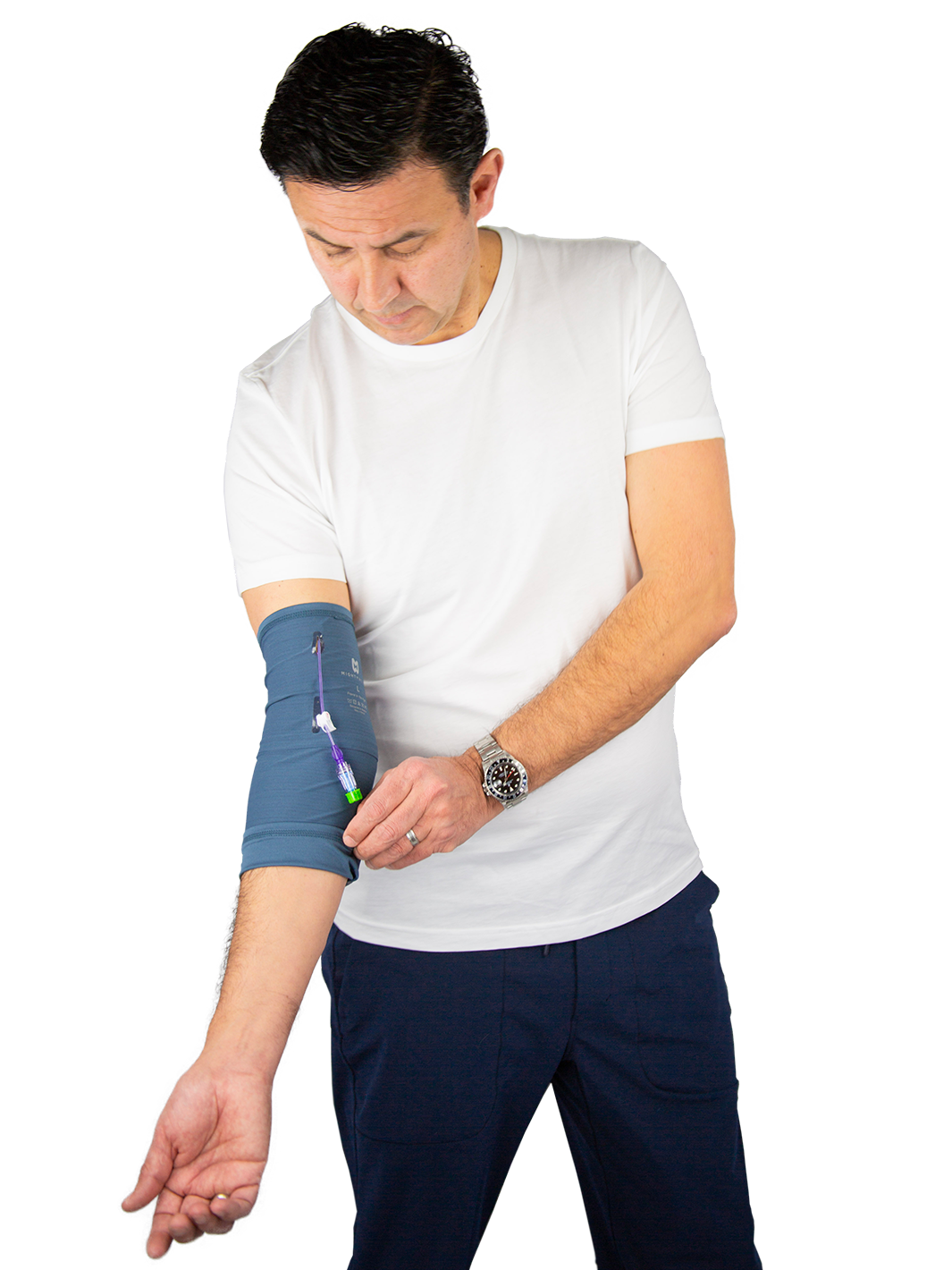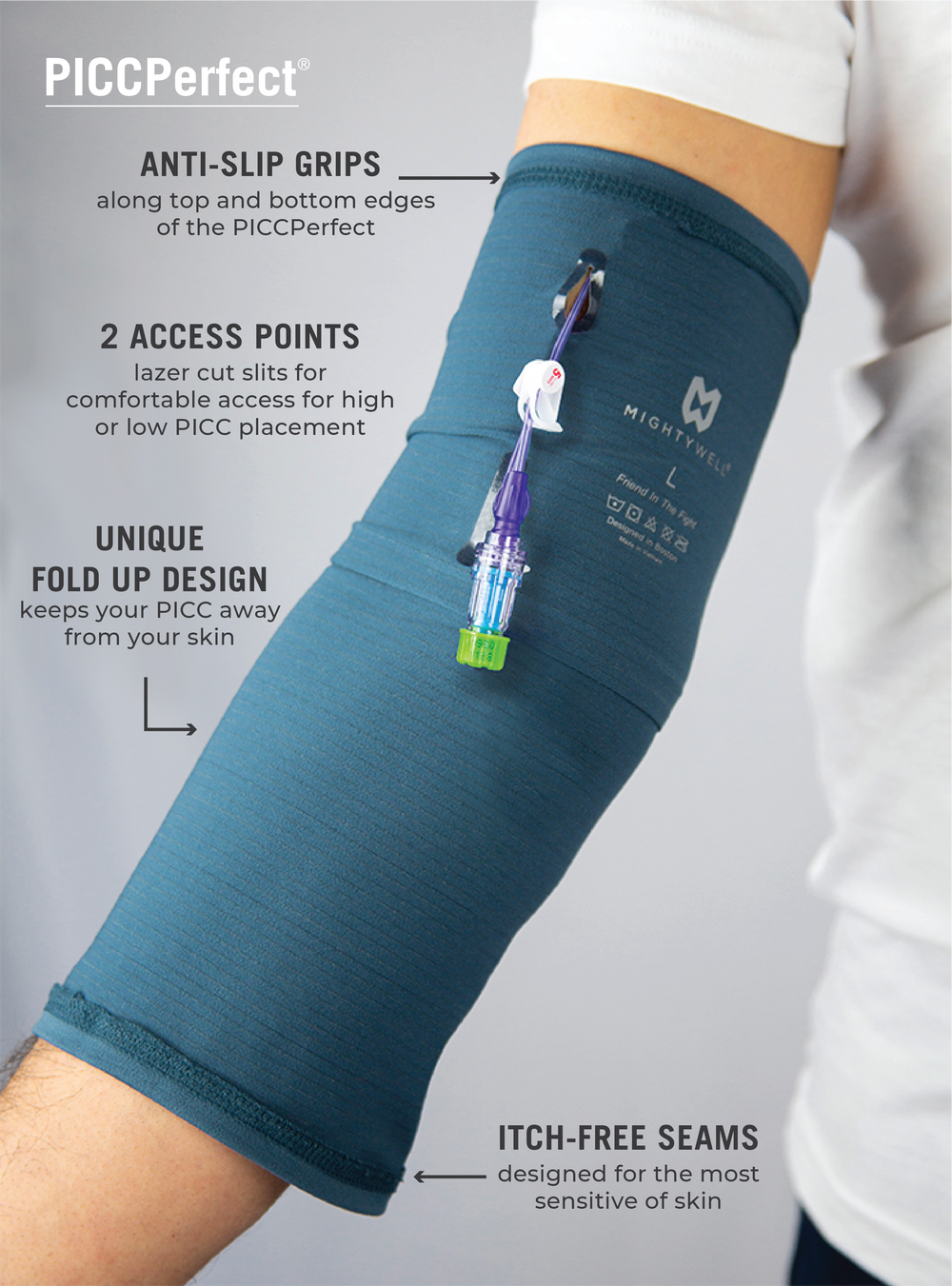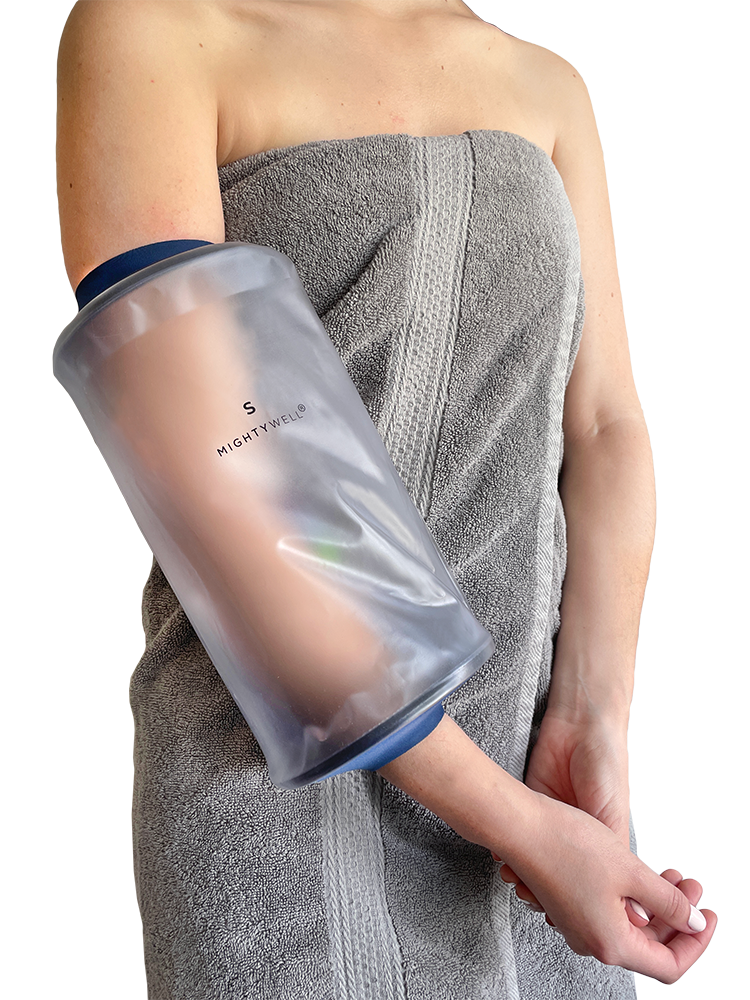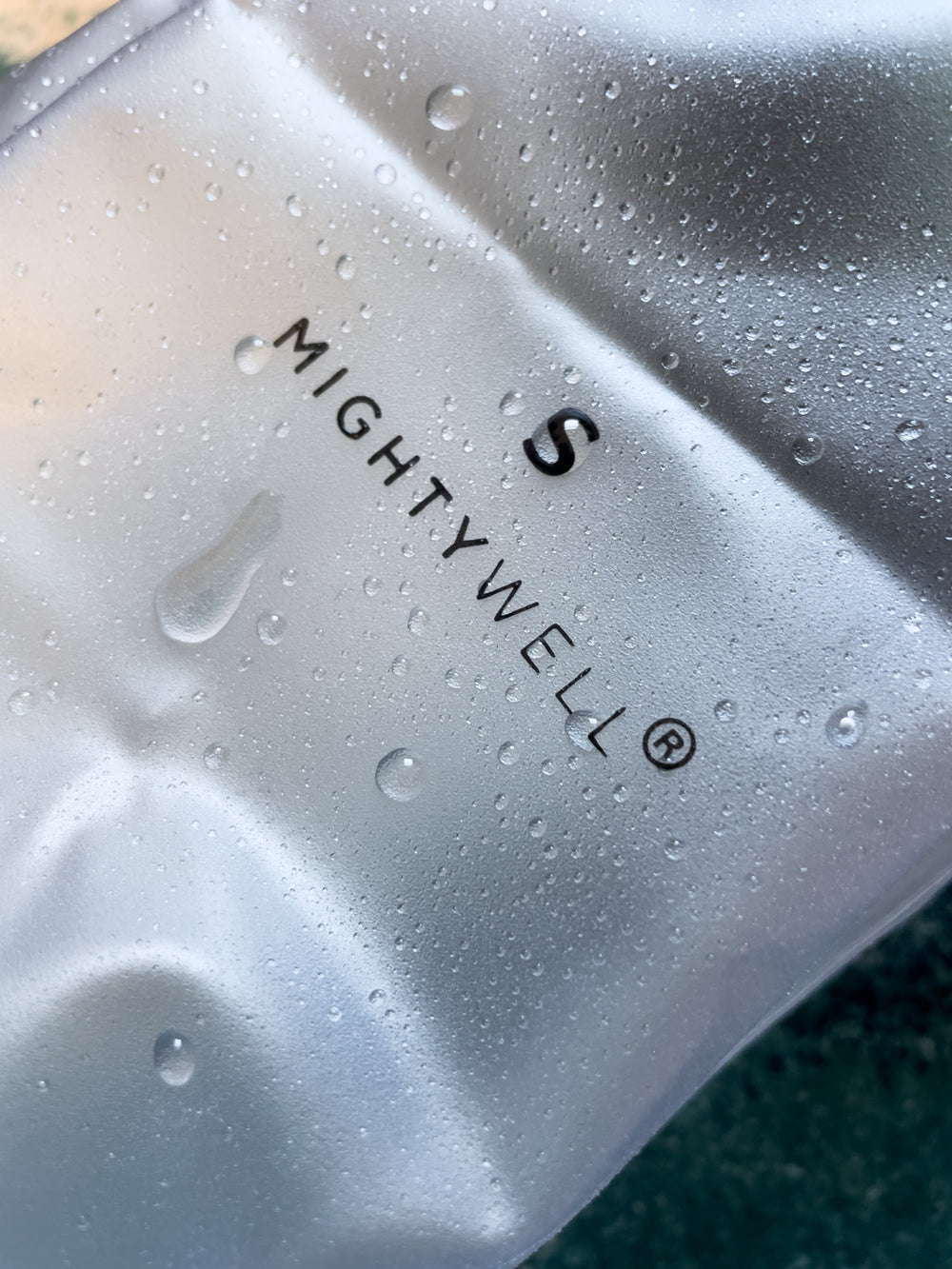3 Things to Know if Your Child is Getting a PICC Line
Recently, our Mighty Well® team received an email from a concerned parent, whose child's doctor had advised that their child would soon need a PICC line for treatment.
The parent sought guidance on any specific considerations when caring for a child with a PICC line. In such instances, it's best to reach out to a member of the care team for expert advice. Below is lifestyle information the Mighty Well® team wishes we knew. For all medical questions, please direct them to your clinician.
Understanding a PICC line can be difficult for children, and grasping its significance in terms of care can pose a challenge. This is primarily because children have other crucial priorities like learning and playing, making it essential to communicate the importance of caring for a PICC line in a way that is engaging and accessible to them.

Key Things to Remember
Why it's needed? A PICC (Peripherally Inserted Central Catheter) offers reliable, long-term access for administering IV fluids, medications, and nutrition, notably beneficial for children, eliminating the need for frequent needle sticks.
PICC Perks for Little Ones? PICC lines provide children with long-term access, the convenience of home-based treatments, reduced hospital stays, and alleviate needle fears by minimizing use through a needleless connection.
Basics of pediatric PICC Care? Includes proper sterilization, daily infection checks, and measures to prevent accidental dislodgment. And our secret weapon? The PICCPerfect® PICC Line Cover – because safety and comfy vibes are a must!
1. So, why does a child need a PICC?
Starting with the basics, a PICC, commonly referred to by patients as a PICC Line, stands for Peripherally Inserted Central Catheter. It is a long, thin tube usually inserted in a large vein in the arm. A PICC line provides medicine, fluids, and other medical treatments over a period of time for patients, many of whom are children. A PICC line allows clinicians and patients to administer essential IV fluids, medicines, and sometimes nutrition, like TPN, directly to the bloodstream without having to “poke or “stick” the child with needles.
2. Why a PICC line over frequent needle sticks?
Our Friends in the Fight who have had children living with PICCs have shared their preferred benefits of PICCs for treatment:
- Long-Term Access: PICC lines provide a reliable and long-term access point to the bloodstream. This is particularly beneficial for children who require frequent intravenous (IV) treatments, medications, or fluids over an extended period.
- Home-Based Care: Many children with PICC lines can receive treatments and care at home, reducing the need for extended hospital stays. This allows them to maintain a more normal daily routine and spend more time in familiar surroundings.
- Reduce Needles Sticks (Needles can very scary for some children): Using a PICC line reduces the need for frequent needle sticks. Instead of repeatedly inserting IV needles, healthcare providers can access the PICC line with a simple needleless connection. Some children may have the fear of needles and sights of needles can cause stress and anxiety. With a PICC line, it reduces the use of needles which helps reduce this anxiety.
- Multiple Medications: PICC lines can accommodate multiple medications and therapies simultaneously, making it suitable for children with complex medical conditions who require a variety of treatments.
3. How do you care for a pediatric PICC line at home?
If your doctor has decided that your child will need a PICC, here are common complications you should know about to help prevent them as much as possible:
Complication 1: Infections
One major issue that parents and clinicians should be wary of when administering a PICC line for a child or any patient. Infections can occur at the insertion site or along the catheter.
There are chances for bacteria to enter the bloodstream during the insertion procedure or dressing change if the tools and equipment are not adequately sterilized. If the PICC line is not sufficiently taken care of or cleaned, it could lead to infection.
Signs of infection at the PICC line insertion area can include redness, swelling, pain, discharge of fluids, and fever. Call your healthcare provider immediately if any of these signs or symptoms appear.
If the infection is left untreated, then it can lead to dangerous medical consequences in the future. There are proper steps and procedures that doctors and parents can practice to help prevent. Medical professionals and doctors must clean the equipment properly before insertion and then explain how to care for the PICC line properly.
Parents should perform daily checks on the PICC line to ensure it remains clean and free from any signs of infection. If any signs of infection are spotted, notify your doctor or healthcare professional.
Complication 2: Dislodgment
Dislodgment is another concern that can arise when children have a PICC line. Due to their higher levels of movement and curiosity, children can accidentally disturb or tug on their PICC line, causing it to move from its original position.
Children may accidentally pull or play with the PICC line, not noticing the damage they could be causing.
Dislodgements can cause an opening in the skin, leading to infections if it is not taken care of. If the PICC line is displaced too much, then healthcare professionals would have to step in and repeat the procedure to reinsert the PICC line. Finding a suitable vein for the insertion might be challenging if the child has experienced long-term or repeated vascular access needs.
To minimize the risk of dislodgment, healthcare professionals must give proper instructions on handling and caring for the PICC line to families and caregivers.
If the child is old enough, ensure that the child understands the importance of his PICC line so they can also help prevent any chances of dislodgment.
A protective cover is the most effective way to help prevent accidental dislodgment. The PICCPerfect® PICC Line Cover by Mighty Well offers a double layer protection that holds your PICC line in place. It will allow the child to play actively without worrying about their PICC line getting caught on something. It provides comfort and security for their PICC line while allowing them to enjoy daily activities.
"My 18-year-old son could not have survived his picc line without the picc sleeve and shower sleeve. Thank you to Paula at Boston Children’s Hospital for the great recommendation." Katherine Ferguson, Buffalo, US.
Overall, it is crucial for clinicians and healthcare professionals to closely monitor the child’s PICC line to ensure the safe and proper delivery of fluids and medications. Daily maintenance and proper sterilization can help prevent issues with the PICC line. If the PICC line is appropriately taken care of, it can ensure a healthier future for the child. If you have any questions about your PICC line, we recommend you consult your healthcare provider for assistance.
Sources
- Banner Health. (n.d.). Your Child Needs a PICC: What to Know. Banner Health. https://www.bannerhealth.com/healthcareblog/teach-me/your-child-needs-a-picc-what-to-know. Accessed 29 Aug. 2023.
- Matsuzaki A, Suminoe A, Koga Y, Hatano M, Hattori S, Hara T. Long-term use of peripherally inserted central venous catheters for cancer chemotherapy in children. Support Care Cancer. 2006;14:153–60.
















Leave a comment